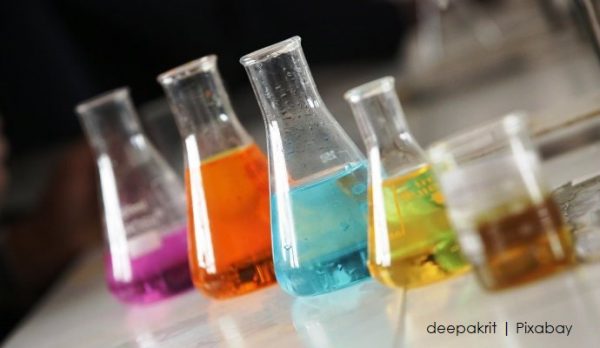The Institute of Chemistry is one of the leading scientific research centres recognized in both Poland and abroad. Our researchers conduct their work within the larger Faculty of Science and Technology of the University of Silesia in Katowice, which is regulated by the Ministry of Science and Higher Education. The Faculty and Institue has met the high standards and regulations of the ministry and is officially recognised as a Category A scientific research centre, among the highest rank in Poland. The Institute of Chemistry conducts scientific projects in the area of both fundamental and applied research in the fields of non-commercial experimental research, computational chemistry (quantum chemistry and molecular modelling), molecular design and organic synthesis with potential to find applications in industry. We are internationally renowned within the fields of quantum chemistry, chromatography, chemometrics and chemoinformatics. Our research is carried out in cooperation with leading national and international research teams and the results are published in prestigious scientific periodicals.
The most important research areas at the Institute of Chemistry:
- Analytical techniques: XRF, EPR, NMR, ICP, IR-Raman spectroscopy,
- Chromatography,
- Chemometrics, analysis and modelling of complex instrumental signals,
- New materials, synthesis and testing of properties,
- Physical Chemistry of condensed phases,
- Theory – new theoretical techniques and applications,
- Chemical synthesis – cutting edge interdisciplinary studies in the borderline of chemistry and biology.
Examples of research projects:
- Projects in medicinal chemistry and chemical biology focusing on the synthesis of novel heterocyclic compounds as anticancer and antimicrobial agents, their mechanism of action and practical applications.
- Projects in nanomedicine, developing a water-soluble [60]fullerene derivatives for cancer nanotechnology studies, which include inhibition of protein kinases, photodynamic therapy of cancer and siRNA transfection.
- Energy storage – new materials and methods of conversion, generation and storage of renewable energy.
- New catalysts for industrial applications.
- Application of chromatography to extract and analyze natural antioxidants.
- Modeling of multivariate and multimodal data using chemometric methods. Hyperspectral imaging.
- Identification of authentic products based on chemical fingerprints.
- Construction of diagnostic models based on omics approaches.
- IoNanofluids – preparation, stability, structure and physicochemical properties of ionic liquids with carbon nanostructures as energy storage materials.
- Molecular springs as a new method of compact thermal energy storage.
- Development of luminescent materials doped with transition metal and/or rare earths for potential applications in photonics, such as solid-state lasers, up-conversion luminescence systems, temperature sensors and active optical fibers.
- Determination of trace and ultratrace metal ions by X-ray fluorescence and atomic spectrometry. Development of new micro-analytical methods based on nanomaterials. Modification of carbon-based nanomaterials for preconcentration, speciation and selective determination of metal ions.
- Design, synthesis and testing of functional properties of novel materials, in particular, drugs (HIV integrase inhibitors, anticancer iron chelators) and nanocatalysts of the potential use in heterogenous environmental catalysis (CO2 methanation, biomass conversion).
- Development of novel functional materials based on coordination compounds; design, synthesis, photophysical, and electrochemical study of luminescent coordination compounds; examination of photophysical processes in metal-organic chromophores; investigation of structure-properties relationships of metal complexes that have potential applications.
- Diels-Alder cycloaddition and Annulative Pi-Expansion, reactions under high (>10 000 MPa) and low (<0.1Pa) pressure, synthesis of non-fullerene organic n-conductors.
- Synthesis of low and high molecular weight organic semiconductors, evaluation of the structural, spectroscopic and thermal properties of the materials for organic electronics.
- Synthesis and evaluation of the photophysical and electrochemical properties of organic (semi)conductors and derivatives exhibiting aggregation-induced emission.
- Development of quantum chemistry methods for dissociation curves of open-shell molecules with closed-shell reference.
- Modeling of electronic spectra and fotochemistry of B12 vitamin and its derivatives.
- Modeling of intermolecular interactions in molecular crystals.
- Molecular properties from density functional theory and coupled cluster based methods.






